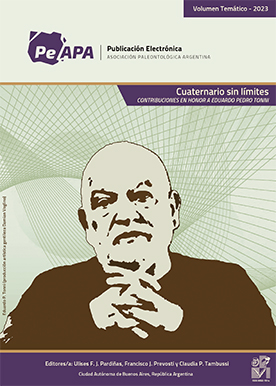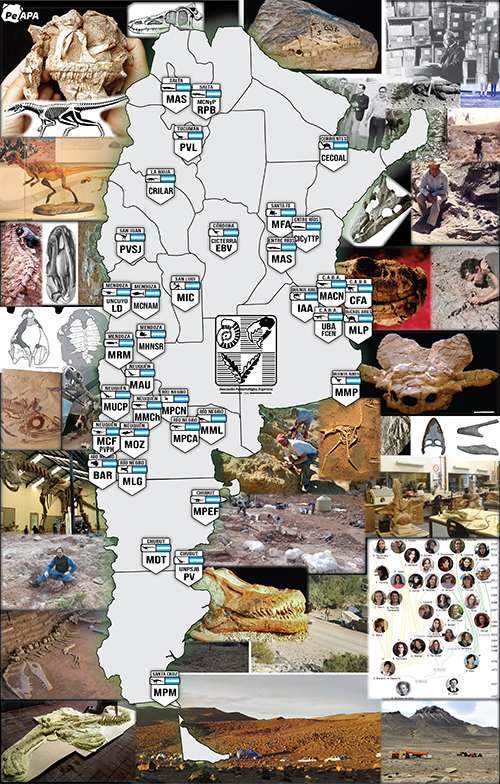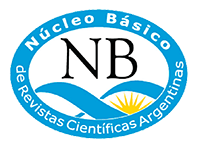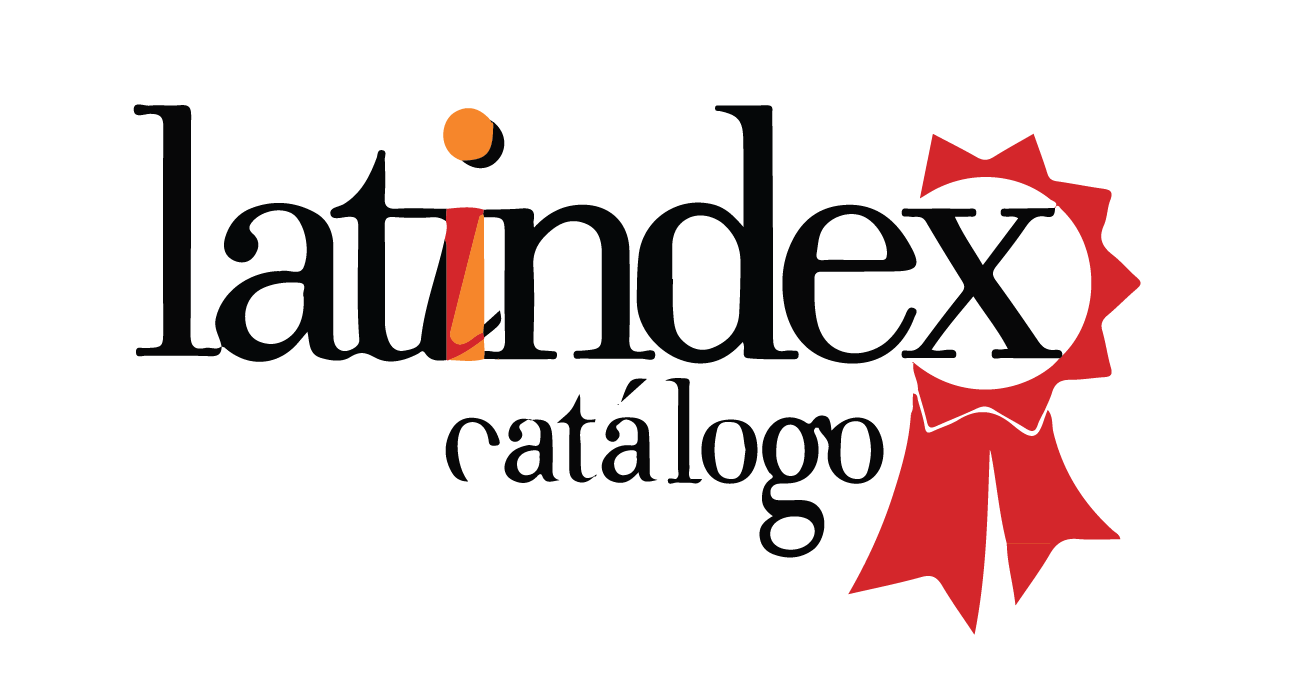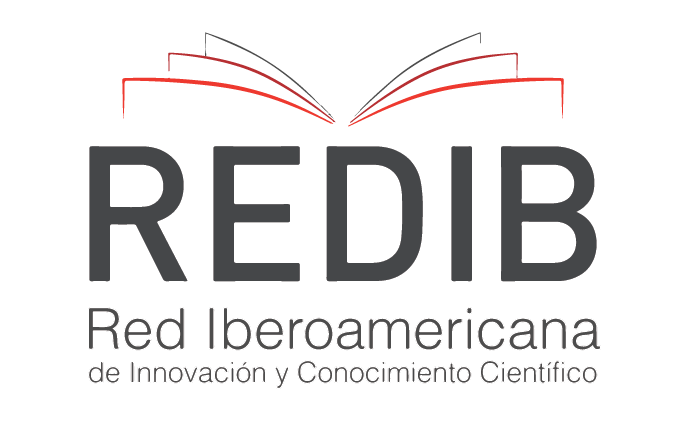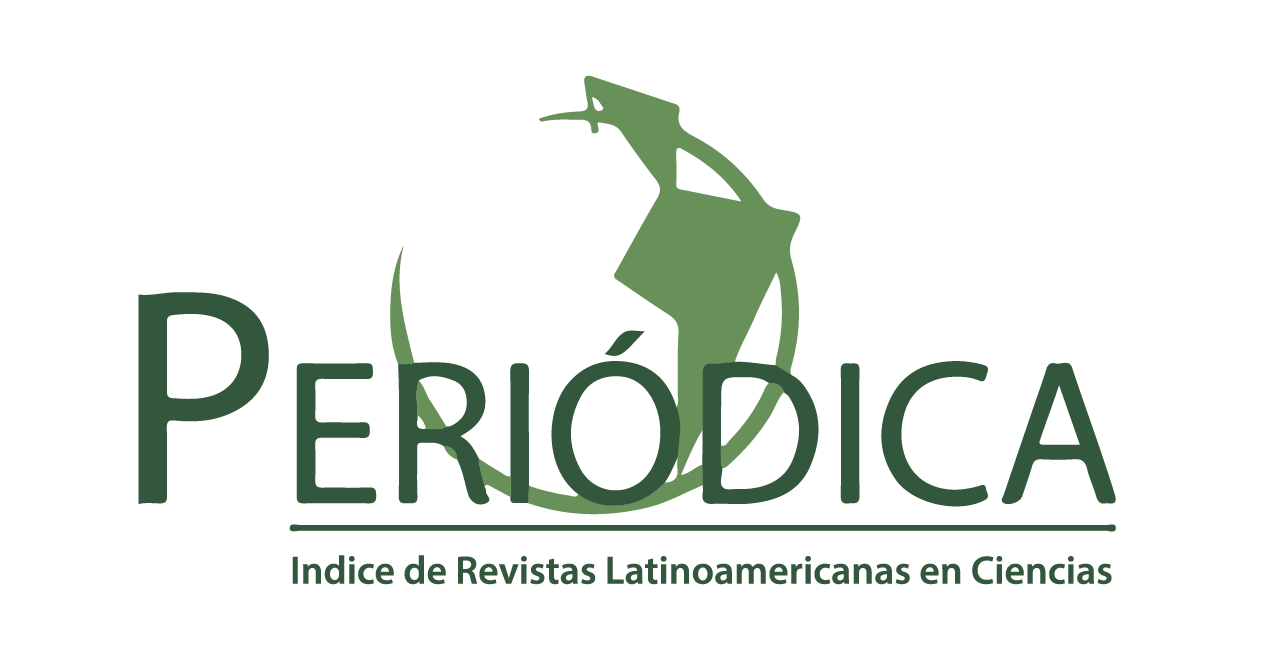GUÍA BÁSICA PARA EL MUESTREO Y PREPARADO DE HUESOS ACTUALES Y FÓSILES PARA ESTUDIOS HISTOLÓGICOS
DOI:
https://doi.org/10.5710/PEAPA.07.04.2020.314Palabras clave:
Paleohistología, Técnica, Sección delgada, ProtocoloResumen
El estudio de la microestructura ósea de vertebrados fósiles (i.e., paleohistología) ha demostrado ser una importante fuente de información paleobiológica. Los estudios paleohistológicos están basados en análisis estandarizados de secciones delgadas petrográficas. A pesar de que el desarrollo de nuevas tecnologías (e.g., microtomografía) ha proporcionado procedimientos no destructivos para el estudio de tejidos fósiles, las secciones delgadas continúan siendo la principal fuente de informaci.n paleohistológica. En esta contribución, proporcionamos un protocolo detallado para el muestreo y preparaci.n de secciones delgadas de huesos de vertebrados tanto fósiles como vivientes. Se describen los procedimientos m.s comunes para la obtención de las muestras y se plantean diferencias particulares, las cuales est.n relacionadas con las variaciones del equipamiento y las técnicas de muestreo. El objetivo principal de esta contribución es proveer un protocolo alternativo para laboratorios en formación y/o con financiamiento limitado.
Referencias
Chinsamy, A. 1990.Physiological implications of the bone histology of Syntarsus rhodesiensis (Saurischia; Theropoda). Paleontologia Africana 27: 77-82.
Chinsamy, A. 1993. Bone Histology and growth trajectory of the prosauropod dinosaur Massospondylus carinatus Owen. Modern Geology 18: 319-329.
Chinsamy, A. 1995. Ontogenetic changes in the bone histology of the Late Jurassic ornithopod Dryosaurus lettowvorbecki. Journal of Vertebrate Paleontology 15:96-104.
Chinsamy, A. andRaath, M.A. 1992. Preparation of fossil bone for histological examination. Palaeontologia Africana 29:39-44
Company, J. 2011. Bone histology of the titanosaur Lirainosaurus astibiae (Dinosauria: Sauropoda) from the Latest Cretaceous of Spain. Naturwissenschaften 98: 67-78.
Curry, K.A. 1999. Ontogenetic histology of Apatosaurus (Dinosauria: Sauropoda): new insights on growth rates and longevity. Journal of Vertebrate Paleontology 19:654-665.
Dupret, V., Sanchez, S., Goujetc, D., Tafforeaub, P. and Ahlberg, P.E. 2010. Bone vascularization and growth in placoderms (Vertebrata): The example of the premedian plate of Romundinastellina Ørvig, 1975. Compets Rendus Palevol 9: 369-375.
Enlow, D.H. and Brown, S.O. 1956. A comparative histological study of fossil and recent bone tissue. Part I. Texas Journal of Science 8: 405-443.
Erickson, G.M., Curry-Roger, K. and Yerby, S.A.2001. Dinosaurian growth patterns and avian rapid growth rates. Nature 412: 429-433.
Erickson, G.M., Curry-Rogers, K., Varrichio, D.J., Norell, M.A. and Xu, X. 2007. Growth patterns in brooding dinosaurs reveals the timing of sexual maturity in non-avian dinosaurs and genesis of the avian condition. Biology Letters 3: 558-561.
Hayashi, S., Carpenter, K. and Suzuki, D. 2009. Different growth patter between the skeleton and osteoderms of Stegosaurus (Ornithischia: Thyreophora). Journal of Vertebrate Paleontology 29: 123-131.
Klein, N. and Sander, P.M. 2007. Bone histology and growth of the prosauropod dinosaur Plateosaurus engelhardti Von Meyer, 1837 from the Norian bone beds of Trossingen (Germany) and Frick (Switzerland). Special Papers in Palaeontology 77: 169-206.
Klein, N. and Sander, P.M. 2008. Ontogenetic stages in the long bone histology of sauropod dinosaurs. Paleobiology 34: 247-263.
Lamm, E.T. 2013. Chapter 4 - Preparation and Sectioning of Specimens. In: Padian, K. and Lamm, E.T. (Eds), Bone Histology of Fossil Tetrapods: Advancing Methods, Analysis and Interpretation. University of California Press, Berkeley, p. 55-160.
Lee, A.H. and Werning, S. 2008. Sexual maturity in growing dinosaurs does not fit reptilian growth models. PNAS 105: 582-587.
Lehman, T.M. and Woodward, H.N. 2008. Modeling growth rates for sauropod dinosaurs. Paleobiology 24: 624-281.
Luna, C.A., Cerda, I.A., Zurita, A.E., Gonzalez, R., Prieto, M.C., Mothé, D. and Avilla, L.S. 2018. Distinguishing Quaternary glyptodontine cingulates in South America: How informative are juvenile specimens? Acta Palaeontologica Polonica 63: 159-170.
Marín-Moratalla, N., Jordana, X., and Köhler, M. 2013. Bone histology as an approach to providing data on certain key life history traits in mammals: implications for conservation biology. Mammalian Biology 78: 422-429.
Martínez-Maza, C., Alberdi, M.T., Nieto-Diaz, M. and Prado, J.L. 2014. Life-history traits of the Miocene Hipparionconcudense (Spain) inferred from bone histological structure. PLoS ONE 9: e103708. doi:10.1371/journal.pone.0103708.
Mukherjee, D. 2018. An improvised core-drilling technique and a new device for osteohistology of fossil bones: implementation on a Jurassic sauropod dinosaur from India. Journal Geological Society of India 91:295-300.
Padian, K., Horner, J.R. and de Ricqlès, A. 2004. Growth in a small dinosaur and pterosaurs: the evolution of archosaurian growth strategies. Journal of Vertebrate Paleontology 24: 555-571.
Sanchez, S., Dupret, V., Tafforeau, P., Trinajstic, K.M., Ryll, B., Gouttenoire, P-J., Wretman, L., Zylberberg, L., Peyrin, F. and Ahlberg, P. 2013. 3D microstructural architecture of muscle attachments in extant and fossil vertebrates revealed by synchrotron microtomography. PLoS ONE 8: e56992.
Sander, P.M. 2000. Long bone histology of the Tendaguru sauropods: implications for growth and biology. Paleobiology 26: 466-488.doi: 10.1371/journal.pone.0056992
Sander, P.M., Mateus, O., Laven, T. and Knötschke, N. 2006. Bone histology indicates insular dwarfism in a new Late Jurassic sauropod dinosaur. Nature 441: 739-741.
Steel, L. 2008. The palaeohistology of pterosaur bone: an overview. Zitteliana 28: 109-125.
Stein.K., Csiki, Z., Curry-Rogers, K., Weishampel, D.B., Redelstorff, R., Carballido, J.L. and Sander, P.M. 2010. Small body size and extreme cortical bone remodeling indicate dwarfism in Magyarosaurus dacus (Sauropoda: Titanosauria). Proceeding of the Natural Academy of Science of the United States of America 107: 9258-9263.
Stein, K. and Sander, P.M. 2009. Histological core drilling: a less destructive method for studying bone histology. In: Brown, M.A.,
Kane, J.F. and Parker, W.G. (Eds.), Methods In Fossil Preparation: Proceedings of the first Annual Fossil Preparation and Collections Symposium. Petrified Forest, p.69-80.
Varricchio, D.J. 1993. Bone microstructure of the Upper Cretaceous theropod dinosaur Troodon formosus. Journal of Vertebrate Paleontology 13: 99-104.
Werning, S. 2012. The ontogenetic osteohistology of Tenontosaurus tilletti. PLoS ONE 7: e33539. doi:10.1371/journal.pone.0033539
Woodruff, D.C., Fowler, D.W. and Horner, J.R. 2017.A new multi-faceted framework for deciphering diplodocid ontogeny. Palaeontologia Electronica 20.3.43A: 1-53
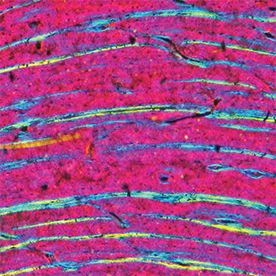
Descargas
Publicado
Número
Sección
Licencia
Derechos de autor 2020 Publicación Electrónica de la Asociación Paleontológica Argentina

Esta obra está bajo una licencia internacional Creative Commons Atribución-SinDerivadas 4.0.

Los/las autores/as conservan los derechos de autor/a y garantizan a la revista el derecho de ser la primera publicación del trabajo licenciado bajo una licencia CC Attribution-NonCommercial 4.0 que permite a otros/as compartir el trabajo con el reconocimiento de la autoría y de la publicación inicial en esta revista.





